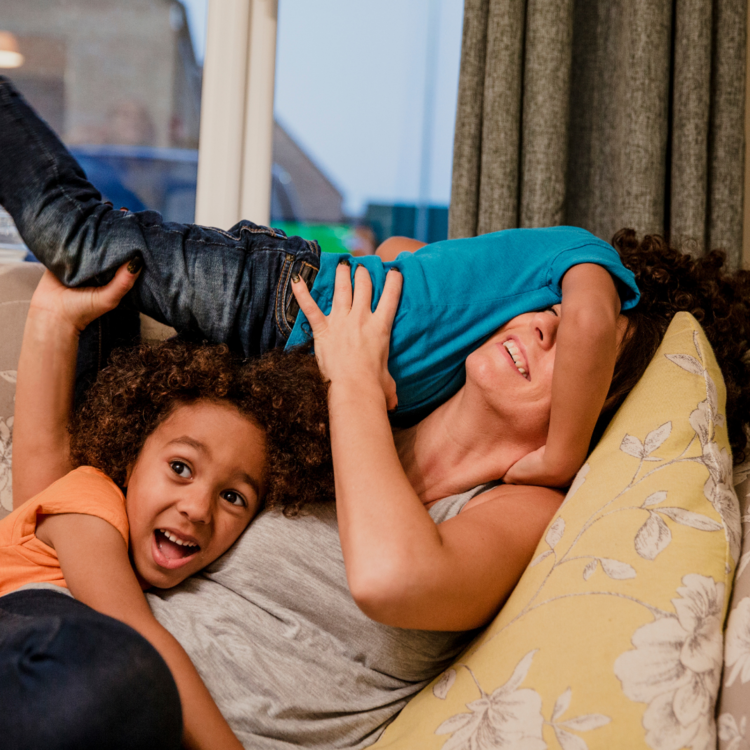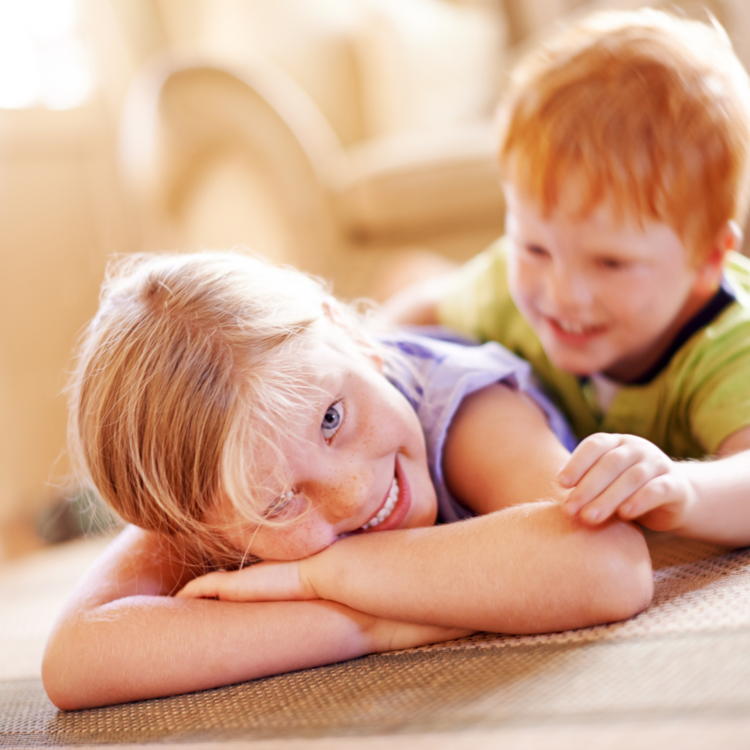Why children need ‘rough and tumble’ in their day!
Written by Claire Burgess, Family Consultant
When we look at children’s play we often talk about the need for them to be physical and often we think about this as going to the park, climbing, running etc, but we do also need to appreciate our children’s need for ‘rough and tumble’ play.
What is ‘rough and tumble’ play?
Rough and tumble describes children’s play when they like to wrestle, roll around, climb over each other (or an adult) and even pretend to fight.
This type of play can help children to:
Gain spacial awareness and work out how to change positions using their body.
Learn about their limits.
Understand what others will or will not let them do, develop boundary control and listen to others.
Work out how to take turns and play roles.
The term ‘rough and tumble’ can lead us to think that it is going to rough play which in turn can make us think that it is a negative thing. This is really not the case, rough and tumble can start from baby stage where we might bounce our little ones on our knees, tickle and roll around on the floor or lift them up in the air.
For toddlers it can be the chasing, tickling, rolling around with them and as they get older this can progress to wanting to play wrestle or ‘rugby tackle’.
When we think about rough and tumble play it can often be associated with males such as dads, uncles, grandads or boys in general. Whilst boys have a tendency to ‘need’ this type of play it is important to allow for opportunities with girls too. Adult females (mums, aunts, grandmas etc) are of course also capable of taking part in this type of play but it doesn’t always (in some cases) come as naturally.
Think about the nature programmes that you might have watched when new baby animals, have the equivalent of ‘rough and tumble’ play. This helps to decide where they are within the pack or herd; remember we are all animals so we also need to work out our pecking order!
Often in rough and tumble play, the children do not intend to harm their friend, what they want to do is to make the play last as long as possible. Actual fighting is when we see children using aggression to control their friends or sometimes the adults around them.
Why is this type of play important?
Encouraging rough and tumble play often leads adults to think that this is just going to hype the child/ren up and that it needs to be avoided as ‘it will only end in tears’. However, this type of play provides lots of opportunities for learning and is an important part of our development.
One of the areas that it works best for is the development of movement, particularly for boys who learn more when they are physically moving rather than sitting still. Rough and tumble play helps to develop children’s strength (and understanding of their limits) along with their social skills. Ultimately for children it is fun!
When we see our children taking part in this type of play we can often step in to stop it as it can look like fighting, however we need to take some time just to see if it is fighting or if it is in fact play fighting – they are very different. One of the biggest signs can be that children smile and laugh when they are taking part in play fighting. When we see a child crying, showing fear or anger then it is typically not rough and tumble play and has blurred into actual fighting.
As this is a very physical type of play then it can also be a good form of exercise and gets our little ones (and us) moving which certainly isn’t a bad thing!
The other skills which are developed around this play are things like problem solving, resilience, social etiquette and awareness, turn taking and also boundaries such as when someone stays that it needs to stop, they have had enough or that a certain thing is hurting or going to cause damage and the child knows when and how to stop. It is all about self-control and self-awareness. Rough and tumble play is seen as very important for developing an awareness of emotions, both that of the child but also those of the children or adults that they are playing with.
How you can you help your child to have this in their day?
Set time aside in the day when this can happen with you if there are not siblings or peers who are able to take part in this. For some children they will look for this within some part of their day so see what time of the day might work for your child.
This type of play can be high energy such as chasing, tickling, rolling around, jumping, catching etc., but it is important that everyone respects each other and when someone is not having fun then the game has to stop. It’s important to listen to each other and, when the time comes to stop, then this needs to be respected straightaway.
Try to do this play when your little one is wide awake and not just before nap or bedtime as it can hype children up so they need opportunity to wind down from this play too. Using a sand timer which is a visual representation of how long you are going to play for and when the timer has come to an end move on to a quieter, calmer activity.
For older children who are able to understand, set ground rules on what is/isn’t ok so this might be certain moves which are a no, or it might be certain no go places within the house. However, this also needs to be balanced with providing the opportunities and spaces, because if they are not there you will find that children then do it where they can as many children have such a strong urge that they will not able to stick to rules that say they are not to do it at all.
Keep encouraging your child to keep trying (particularly for those children who give up easily or have a fear of losing) so in games such as ‘can you get me’ if your child hasn’t been able to catch you then encourage them to keep trying as this will help them learn important life skills in building resilience. However, it’s important to allow your child to ‘win’ too!
Always allow time to calm down but don’t go from 100 to 0, e.g. if you are playing and your child is having a great time but you suddenly say that it is over and no more. You need to allow for the time where you might just start to bring things down in energy and talk about what you are going to do next so that your child can prepare. If you stop suddenly, you can often find that your child will get upset, angry or frustrated because they are overwhelmed with emotion.
Provide space for this to take place so somewhere where things can’t get broken which might need to be outside (garden or playground). When you are inside this can be that you clear a space but set the boundaries by explaining that the play needs to be a little gentler.
Understand that there are going to be times when it might go a little too far, but to be there as a role model or support in getting things back under control in a calm and understanding manner. We can be drawn to saying things such as “see I told you that this would end up with one of you getting hurt!”, “you went too far and now look!” but this is not helpful for either party and also doesn’t help your little one to learn. Look at how you can rephrase things so that there is learning taking place, with you as the support or guide. Saying things such “Ok calling time out, I heard someone say stop so let’s stop and see where we are”, “You were having so much fun and you did some great moves but I can see that you are getting a bit cross now so let’s just take 5 mins.”
Don’t always step in and break things up when you see this type of play. This can be very hard to do but for some children this play with their friends is an important part of their development and separating them only leads to them finding other ways to get this out of their systems.
Examples of rough and tumble play:
Chasing games so running around trying to catch each other
Wrestling
Tickling games
Pretending to be an animal and you are going catch them
Letting them climb on you
Spinning
Lifting up in the air
Bouncing on your knees
We can often look at play as needing to be activities where we can see children being able to concentrate, focus and fully immerse themselves. When we look at rough and tumble play we can look at this as fun but not always as a learning opportunity. Hopefully this blog has helped you to see that it really does have huge benefits in all areas of learning and it is important to see how it can feature as a regular part of your child’s day.
While you are here, have a look at our webinars on topics such as sleep, toilet training and play as well as our other blogs (on topics too numerous to mention!).
We also have a podcast - ‘Newborn to Teen and Everything in Between’ - listen here.



